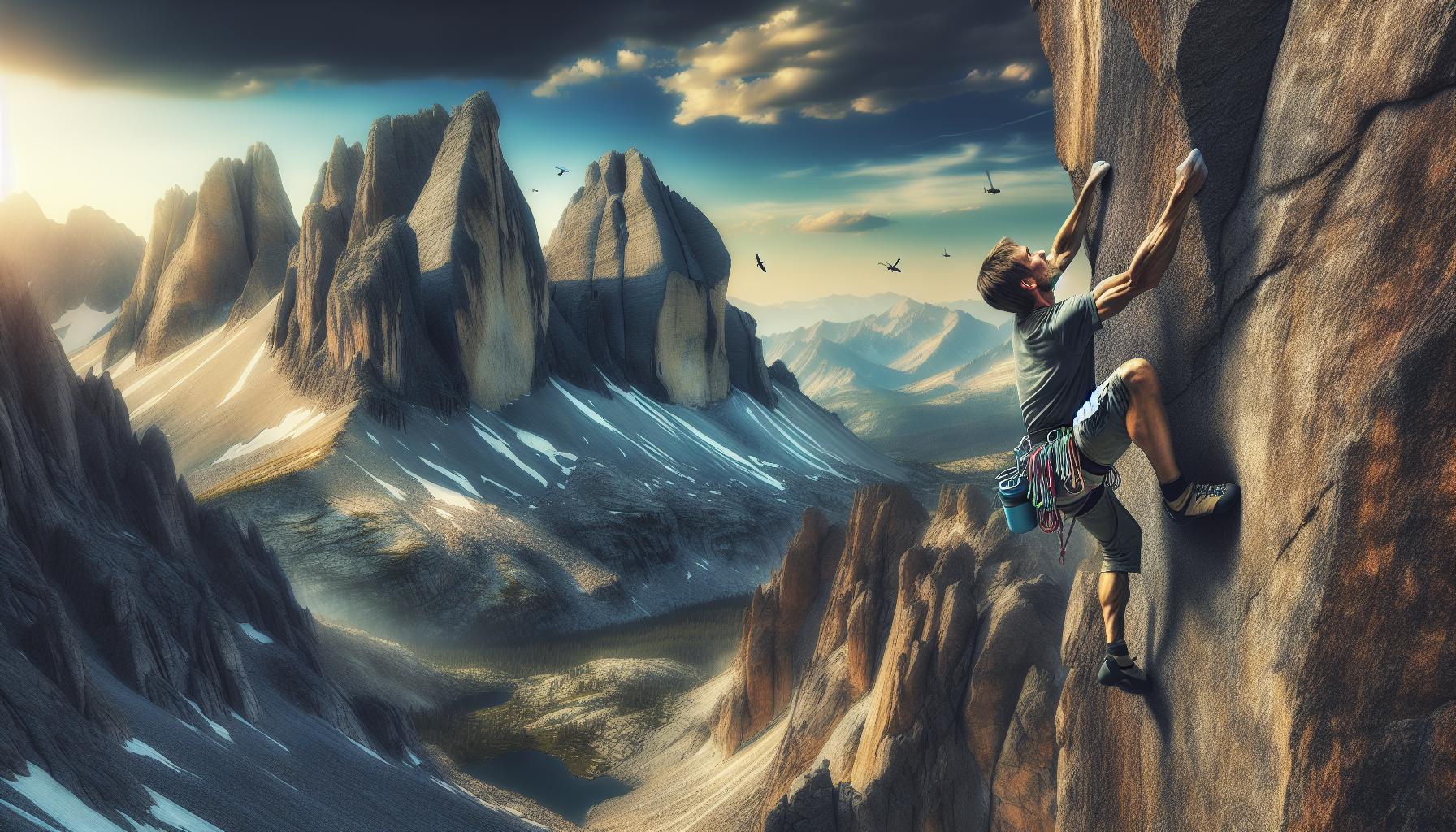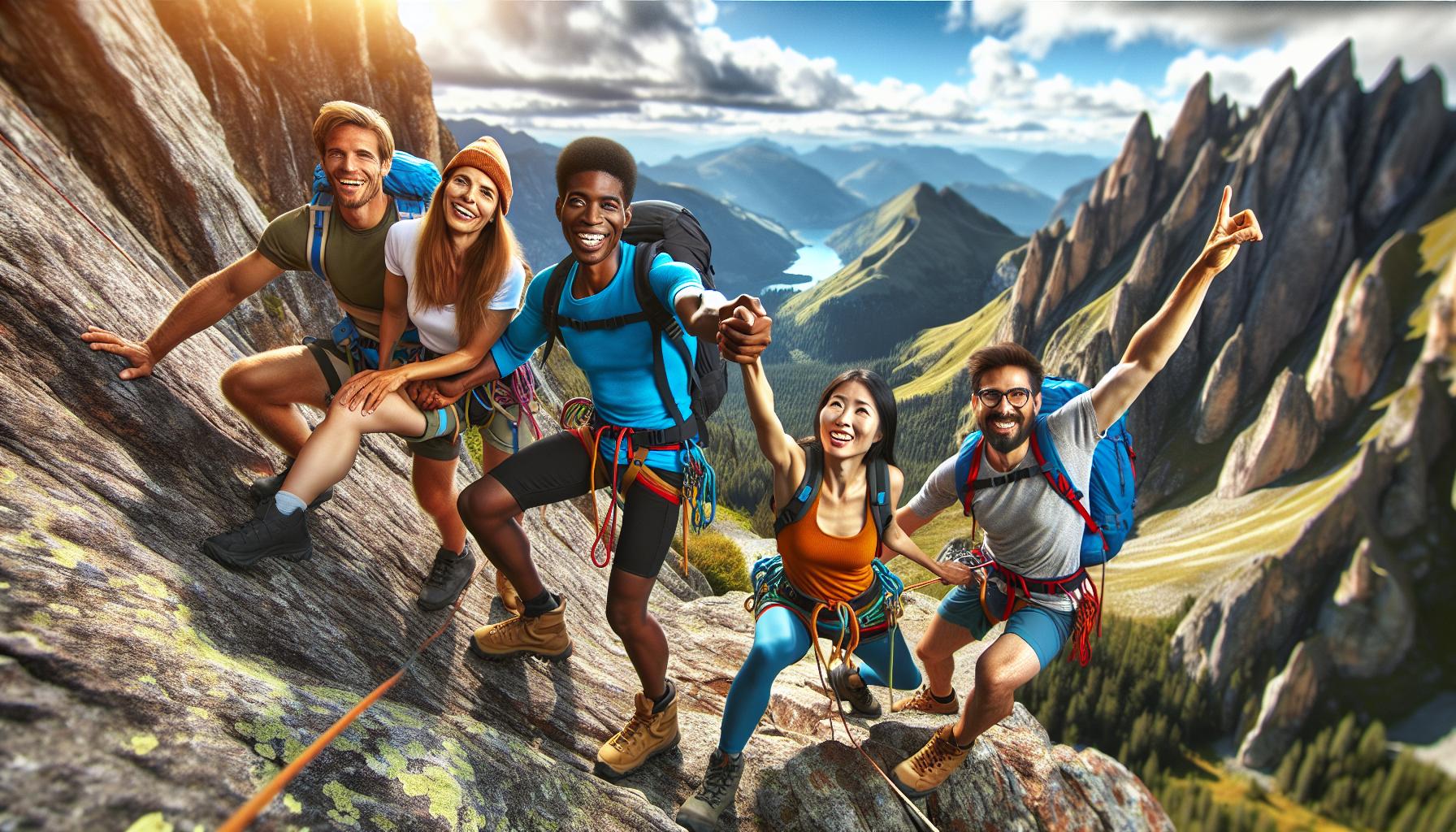Key Takeaways
- Definition of Hard Adventure Tourism: This niche focuses on intense, physically demanding activities that challenge participants both physically and mentally, set against breathtaking landscapes.
- Popular Activities: Adventurers can engage in exhilarating pursuits such as mountaineering, white-water rafting, and rock climbing, which require skill, teamwork, and preparation.
- Key Destinations: Notable locations for hard adventure tourism include the Himalayas, the Rockies, and Patagonia, each offering unique challenges and stunning natural beauty.
- Physical and Mental Benefits: Participants experience enhanced physical fitness, increased mental resilience, and a deeper connection with nature as they push their limits.
- Risks and Safety: Awareness of physical hazards, weather conditions, and wildlife interactions is essential. Proper training, equipment, and mental preparedness can mitigate dangers.
- Social and Cultural Insights: Hard adventure tourism fosters strong social bonds among participants and provides opportunities for cultural immersion, enriching the overall experience.
Hard adventure tourism is capturing the hearts of thrill-seekers around the globe. This exhilarating niche combines adrenaline-pumping activities with breathtaking landscapes, pushing travelers to their limits. From scaling towering peaks to navigating treacherous rivers, hard adventure tourism offers experiences that challenge both body and mind.
As more people seek authentic and transformative experiences, the allure of hard adventure grows stronger. It’s not just about the adventure; it’s about connecting with nature and discovering one’s inner strength. Whether it’s trekking through dense jungles or conquering extreme sports, hard adventure tourism promises unforgettable memories and a sense of accomplishment that few other activities can provide.
Hard Adventure Tourism
Hard adventure tourism encompasses a range of intense, physically demanding activities designed for thrill-seekers. This niche invites participants to explore remote locations while engaging in challenges that test endurance and skill. Enthusiasts enjoy experiences such as rock climbing, white-water rafting, and extreme trekking, often in diverse environments like mountains, forests, and deserts.
Key components of hard adventure tourism include:
- Physical Challenges: Activities require significant physical exertion, often involving rigorous training and preparation.
- Mental Engagement: Participants face not only physical tests but also mental hurdles, leading to personal development and resilience.
- Natural Connection: Travelers immerse themselves in breathtaking landscapes, fostering a deep appreciation for nature.
- Shared Experiences: Group activities encourage camaraderie and teamwork, allowing travelers to forge strong bonds with others who share their passions.
As hard adventure tourism continues to grow, it attracts individuals seeking profound experiences far beyond typical vacation offerings.
Popular Activities in Hard Adventure Tourism

Hard adventure tourism features a variety of exciting activities that appeal to thrill-seekers looking for immersive experiences. Notable activities include mountaineering, white-water rafting, and rock climbing, which challenge participants both physically and mentally.
Mountaineering
Mountaineering tests endurance and skill as participants ascend high peaks often exceeding altitudes of 4,000 meters. Climbers navigate challenging terrains that include rock faces, ice fields, and snow-covered slopes. Popular destinations for mountaineering include the Himalayas, the Andes, and the Alps. Gear such as climbing harnesses, helmets, and appropriate footwear is essential for safety and success.
White Water Rafting
White-water rafting offers an exhilarating experience on fast-flowing rivers. This activity usually takes place on Class III to V rapids, which require teamwork and quick decision-making. Locations renowned for white-water rafting include the Colorado River, the Nile, and New Zealand’s Shotover River. Safety equipment such as life jackets and helmets enhances the safety of participants while navigating challenging waters.
Rock Climbing
Rock climbing includes techniques for ascending natural vertical rock formations or artificial rock walls. This discipline offers variations such as sport climbing, traditional climbing, and bouldering, each presenting its unique challenges. Popular climbing destinations include Yosemite National Park in California, the limestone cliffs of Thailand, and various locations in Europe. Climbers utilize gear like ropes, carabiners, and climbing shoes to ensure a safe and enjoyable experience.
Key Destinations for Hard Adventure Tourism

Hard adventure tourism thrives in locations that challenge participants with demanding activities amid breathtaking landscapes. The following destinations stand out for their unique offerings in this adventurous niche.
The Himalayas
The Himalayas represent one of the most sought-after regions for hard adventure enthusiasts. This mountainous range, home to peaks exceeding 8,000 meters, attracts trekkers and climbers seeking unmatched challenges. The region hosts iconic treks, like the Annapurna Circuit and Everest Base Camp, where travelers navigate rugged terrain, harsh weather, and thin air. Specialized gear and acclimatization are crucial for safety and optimal performance. The diverse ecosystems further enhance the experience, offering sightings of unique flora and fauna.
The Rockies
The Rocky Mountains offer a diverse array of hard adventure activities, including rock climbing, mountain biking, and skiing. Spanning 3,000 miles across North America, the Rockies feature varying elevations and terrains suitable for thrill-seekers. Renowned climbing spots like Rocky Mountain National Park challenge climbers with vertical routes while breathtaking views reward their efforts. In the winter, popular resorts provide extreme skiing and snowboarding experiences, enhancing the appeal of this majestic region. Wildlife encounters enhance the adventure, making it a favorite for outdoor enthusiasts.
Patagonia
Patagonia captivates adventurers with its dramatic landscapes and challenging environments. This remote region, shared by Chile and Argentina, boasts stunning mountains, glaciers, and fjords. Travelers engage in activities like trekking the Torres del Paine Circuit or navigating the challenging waters of the Beagle Channel. Experienced guides often accompany expeditions, ensuring safety and enriching the experience with local knowledge. The region’s isolation provides an authentic connection with nature, allowing adventurers to immerse themselves fully in its raw beauty.
Benefits of Hard Adventure Tourism

Hard adventure tourism provides multiple benefits that extend beyond mere thrill-seeking. Travelers experience personal growth through increased resilience, self-confidence, and improved physical fitness.
- Physical Fitness: Engaging in demanding activities like rock climbing and white-water rafting enhances cardiovascular health and builds muscle strength. Participants often achieve higher levels of endurance and overall fitness.
- Mental Resilience: Overcoming challenging situations fosters mental toughness. Participants face fears and push limits, which cultivates a greater sense of accomplishment.
- Connection with Nature: Adventurers gain a profound appreciation for the environment. Trekking in untamed landscapes fosters mindfulness and a sense of responsibility toward ecological preservation.
- Social Bonds: Hard adventure tourism encourages group participation, leading to strengthened relationships. Shared challenges promote teamwork and camaraderie among travelers.
- Unique Experiences: Travelers create lasting memories by engaging in extraordinary activities in stunning locations. Experiences like navigating the icy paths of Patagonia or exploring the rugged peaks of the Himalayas stand out.
- Cultural Insights: Adventure tourism offers opportunities to immerse oneself in local cultures. Engaging with communities provides deeper context to the visited areas and enriches the overall travel experience.
- Stress Relief: The immersive nature of hard adventure tourism helps individuals disconnect from daily stressors. Activities that stimulate the senses promote relaxation and mental clarity.
Risks and Safety Considerations
Hard adventure tourism presents various risks that participants must recognize and prepare for. Understanding these risks promotes safer and more enjoyable experiences while engaging in thrilling activities.
Physical Hazards
Physical hazards include injuries from falls, slips, and accidents. Participants face diverse environments that pose unique challenges. For instance, rock climbing involves potential falls and equipment failure, while white-water rafting can result in capsizing or collisions with obstacles. Proper training, experience, and equipment can help mitigate these risks.
Weather Conditions
Weather conditions play a crucial role in adventure tourism safety. Extreme weather can lead to hazardous situations such as avalanches, flash floods, or hypothermia. Travelers should monitor forecasts and be adaptable to changing conditions. Carrying essential gear like waterproof clothing and emergency supplies can enhance safety.
Wildlife Encounters
Wildlife encounters present additional risks for adventurers in remote areas. Animals, such as bears or snakes, can pose threats if provoked. Travelers should understand local wildlife behaviors and carry bear spray or other deterrents when necessary, especially in regions known for wildlife activity.
Mental Preparedness
Mental preparedness is vital in navigating challenging situations. Adventure tourism often tests endurance and decision-making under stress. Participants should prepare mentally for the challenges ahead and develop problem-solving skills. Working closely with experienced guides can offer valuable insights and support.
Insurance and Emergency Plans
Adventure travelers should consider obtaining insurance that covers high-risk activities. Insurance can provide financial protection in cases of injury or unexpected events. Establishing emergency plans, including evacuation routes and communication methods, ensures preparedness for unforeseen circumstances.
Group Dynamics
Group dynamics influence safety in adventure tourism. Travelers should communicate openly with group members, set clear roles, and establish guidelines. Collaboration fosters trust and support, making it easier to address challenges and prioritize safety during activities.
Focusing on these risks and safety considerations enhances the overall experience in hard adventure tourism while promoting responsible and informed participation.
Hard Adventure Tourism
Hard adventure tourism stands as a beacon for those craving excitement and personal growth. It offers a unique blend of physical challenge and mental engagement while connecting travelers with breathtaking natural landscapes. As participants tackle intense activities like mountaineering and white-water rafting, they not only push their limits but also foster lasting memories and friendships.
This niche tourism not only enhances physical fitness and mental resilience but also cultivates a deeper appreciation for the environment. With proper preparation and awareness of risks, adventurers can embark on unforgettable journeys that enrich their lives and inspire a sense of responsibility toward nature. Embracing the thrill of hard adventure tourism paves the way for transformative experiences in the great outdoors.